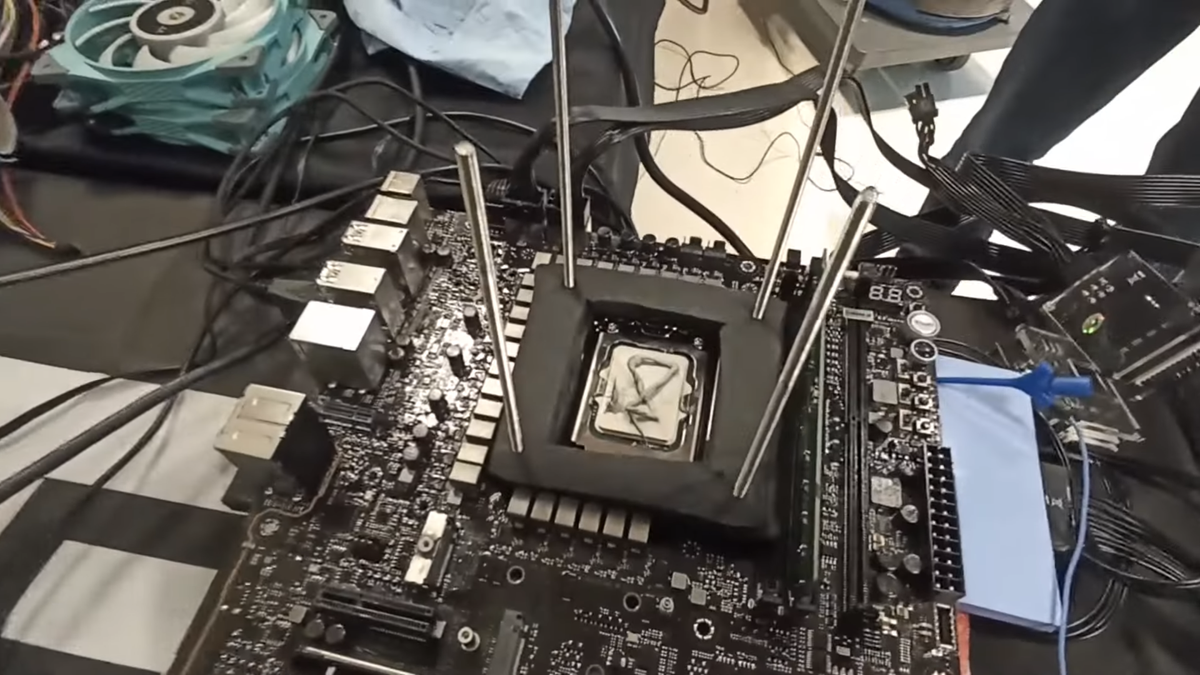Using only the power of a small star, we were able to crash Windows in record time.
Vegeta, what’s his MHz level?
Is one of the records heat-related? 🫠
All that, and Electron apps are still sluggish.
Hardware can’t fix what’s broken in software.
Only -231 degrees required, nice.
Is clock speed a thing anymore rather than cores?
As far as I know, clock speed is still pretty nice to have, but chip development has shifted towards adding multiple cores because it basically became technologically impossible to continue increasing clock speeds.
A nice fun fact: if you consider how fast electricity travels in silicium, it turns out that for a clock that pulses in the tens of billions of times per second (which is what gigahertz are), it is physically impossible for each pulse to get all the way across a 2cm die before the next pulse starts. This is exacerbated by the fact that a processor has many meandering paths throughout and is not a straight line.
So at any given moment, there are several clock cycles traveling throughout a modern processor at the same time, and the designers have to just “come up” with a solution that makes that work, nevermind the fact that almost all the digital logic design tools are not built to account for this, so instead they end up having to use analog (as in audio chips, not as in pen-and-paper design) design tools.
Signals don’t have to make it across the whole die each clock pulse. They just have to make it to the next register in their pipeline/data path, and timing tools for that absolutely exist. They treat it as analog because the signals themselves are analog and chips must account for things like the time it takes for a signal to go from a 0 to a 1 (or vice versa), as well as the time it takes to “charge” a flip flop so that it registers the signal change and holds it stable for the next stage of the pipeline.
Depends on what you are doing.
Gaming you want speed.
rendering, you want cores.
as a typical rule of thumb, since games will always be limited to the number of threads they use, and rendering/compiling/etc typically uses everything it can get.
And CPUs with higher core counts tend to have lower clock speeds per core, leading to games sometimes running much better on mid-range hardware than on the latest and greatest.
Yeah i forgot to mention that. thanks for picking up my slack.
More cores > more heat > less speed per core to manage the heat.
Less cores > less overall heat > more speed per core.
Which is why, generally, a 5600 is better for gaming than a 5950.
the 3d cache chips throw a minor wrench into things though, as the extra and faster cache can help compensate for lower speeds, which makes the 5800x3d generally a better gaming chip than the 5600, despite lower speeds.
deleted by creator
Thank fuck it wasnt kelvin!
deleted by creator
Was one of the records “Largest Dwarf Fortress Fort with a playable frame rate”?
This may excite some, but I value sustained real-world performance more. For example, the fast processors tested by Gamers nexus.
“You might enjoy F1 racing, but I value fuel-efficient commuters more.”
We can like both things.
The index of efficiency at LeMans is where the 2 meet for me.
I also dig the hyper milers, but don’t commute far, so haven’t bothered with my own cars.
deleted by creator
Wasting our precious, precious Helium
Looks like we just found more, just in time for the private sector to exploit fully…
Original video: https://www.youtube.com/watch?v=qr26jxPIDm0
Holy shit what is the average freq for this cpu? They probably had to increment the Volatge by a LOT. I mean what technology is this 10nm? The capacitance of those devices takea big part on latency
It’s 6.2 GHz and they set the voltage to 1.85 V. Both is stated in the article. You must have missed it.
Okay thanks. Ah then there isn’t such a disparity between frequency.
deleted by creator
Even the Ferengi would recognize this as a lost cause.

lol, Lemmy really is still a very small world, isn’t it, buddy?🖖🏻
Rule of Aquisition… eh, whatever
nah. Not enough to drop or steal.










